“DISINVESTMENT- IS IT A BLESSING IN DISGUISE ?”
- Yashasvi Sharma
- Aug 10, 2020
- 5 min read
The recent level of dis-investments by Modi government 1.0 & 2.0 is a question of concern for most of the individuals specially the opposition, in past few years the country is witnessing the highest sale of public sector enterprises to private sector or other interested parties. The soul of government lies in the public sector enterprises in such a way that these establishments provide services to the common man ensuring the availability at masses. Let us understand what PSE/PSU are.
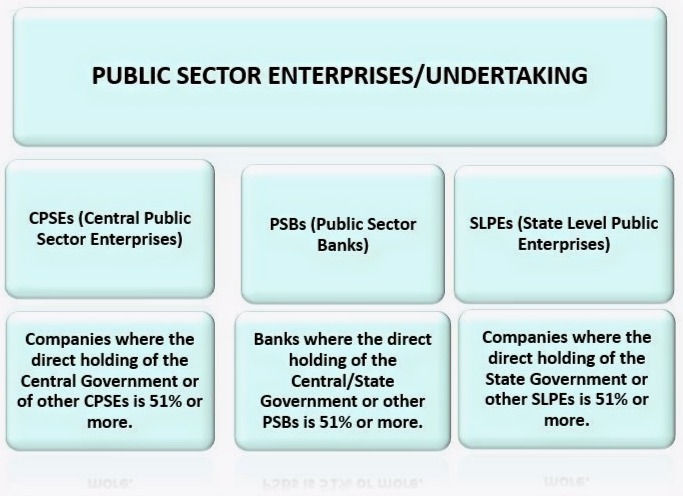
Every government require fund for operations, but sometimes in difficult scenario it is next to impossible for the government to obtain funds from the traditional sources of revenue. In that case government take extreme steps to sell out its assets to obtain money. Also, sometimes various other factors contribute to the decision of sale of PSUs such as: -
1. Price policy of public sector undertakings
2. Under–utilization of capacity
3. Problems related to planning and construction of projects
4. Problems of labor, personnel and management
5. Lack of autonomy
Disinvestment is nothing but the process of sale or liquidation of public sector enterprises. Disinvestment can also be defined as the action of an organization (or government) selling or liquidating an asset or subsidiary. It is also referred to as ‘divestment’ or ‘divestiture.’

In the period from 1991 to 2001 government fails to achieve its target for dis-investments, after analyzing the situation following reasons were identified for low proceeds such as: -
1. Unfavorable market conditions
2. Offers made by the government were not attractive for private sector investors
3. Lot of opposition on the valuation process
4. No clear-cut policy on disinvestment
5. Strong opposition from employee and trade unions
6. Lack of transparency in the process
7. Lack of political will
The Importance of Disinvestment is witnessed in such scenarios where government requires huge funds to deal with fiscal deficits, large scale infra-structure projects, repayment of public debt, social programs for the masses etc.

The government is managing the CPSES count successfully over the past few years under the Modi regime there has been an increase in the total number of CPSES as well as the profit making enterprises.
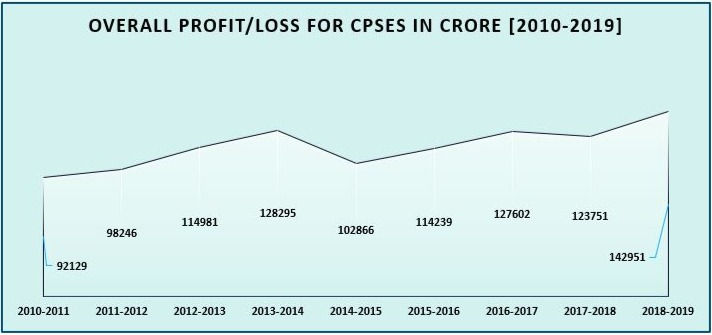
On the other hand, after adjusting the losses of negative PSUs with positive PSUs the government is able to put a steady increase in net profit for the PSUs from 2014-2015 after taking a dip from its previous year.
While the capital employed & investment in CPSES by the government is quite high, which portrays a strong picture for the establishments.

Once the government decided to extract its funds from any CPSES the biggest question for government is to wheather to go for full or partial disinvestment. Let us understand the Different Ways of Disinvestment from CPSES: -
Generally, Disinvestment is considered something negative but, eventually it is a part of government functionality.
Government follows two ways for dis-Investment.
1. Strategic Dis-Investment
2. Dis-Investment Through Minority Stake Sale

STRATEGIC
DIS-INVESTMENT
Strategic Disinvestment implies substantial sale of Government shareholding of a CPSE along with transfer of management control. Over a period, it is witnessed that market/segment comes to maturity/age, when the competition is high potential is low. In such a scenario the most prominent way for government with respect to old organizations which are thriving for survival due to lack of investment, technical upgradation & effective management is to dis-investment. Since such steps will add funds to the government pocket.
The policy of strategic disinvestment is followed in respect of the CPSEs which are not in ‘priority sector’.
For this purpose, NITI Aayog identify such CPSEs based on the criteria of
(i) National Security;
(ii) Sovereign functions at arm’s length, and
(iii) Market Imperfections and Public Purpose.
Strategic dis-investment can be in form of either majority dis-investment or privatization. However, the difference between the two is that with majority of disinvestment government still retain minority stake for controlling purposes with help of voting rights & privatization offers complete forgo of organization.
Over the past few year these are major deals by way of strategic disinvestment: -
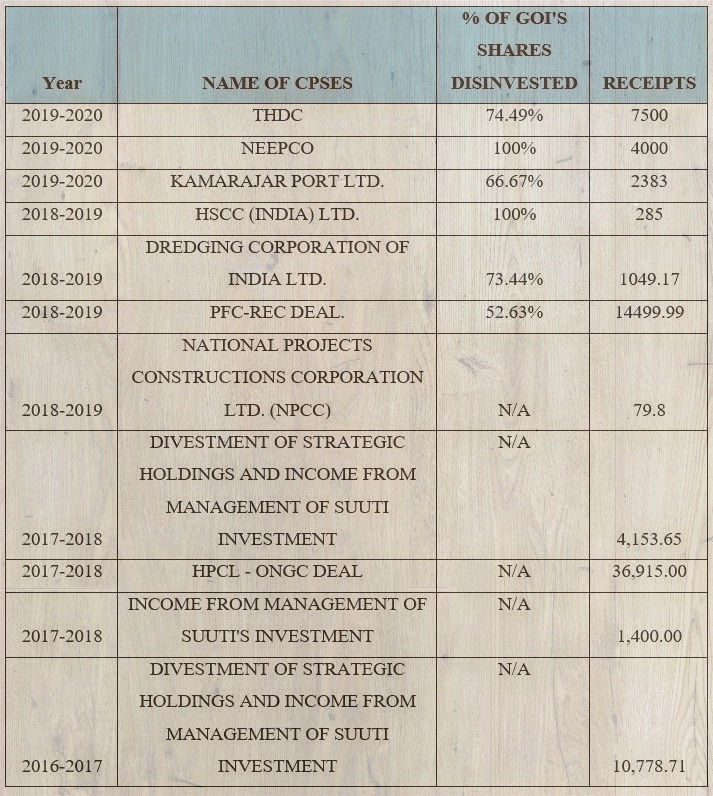
DIS-INVESTMENT THROUGH MINORITY STAKE SALE
Sometimes the aim of the government is to acquire funds without diluting the control rights. In such a scenario divestment through minority stake comes into play various SEBI approved methods, are being followed in order to unlock the value, promote public ownership and higher degree of accountability. The various modes of disinvestment commonly used for minority stake sale includes Initial Public Offer (IPO), Offer for Sale (OFS), Buyback of shares and Exchange Traded Funds (ETF), Institutional Placement Program (IPP), Offer for Sale (OFS), Block Deal, Buy Back, Cross Holding etc.
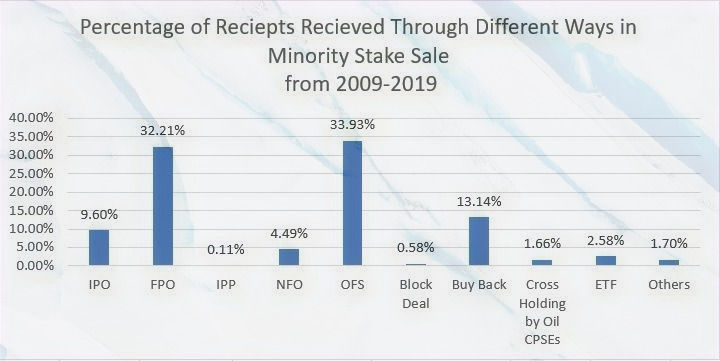
However, In the budget of year 2016-2017 government changes its prospective from disinvestment-based approach to Investment bases approach such as Comprehensive management of GoI's investment in CPSEs.

Different options are assessed to adopt suitable investment management strategies to improve investors' confidence in the CPSEs and support their market capitalization which is essential for raising fresh investment from the capital market for their expansion and growth. Also, Efficient management of investment in CPSEs is ensured through rationalization of decision-making process.
WHAT HAPPENS WHEN A CPSES GOES INTO LIQUIDATION ?

WHAT HAPPEN TO THE FUNDS RELEASED FROM THE DIS-INVESTMENTS ?
The funds which are realized from the sale of Public Sector Enterprises are transferred directly into National Investment Fund (NIF). In order to use NIF more extensively government has decided to allocate 75% of these funds for the schemes of social sector related to education, health & employment, and the balance 25% is allocated to the profitable PSUs capital requirement. Public Sector Mutual Funds, namely UTI Asset Management Company Ltd., SBI Funds Management Private Ltd. and LIC Mutual Fund Asset Management Company Ltd. Are enlisted to manage NIF corpus.
NIF is utilized for the following below mentioned purposes such as: -
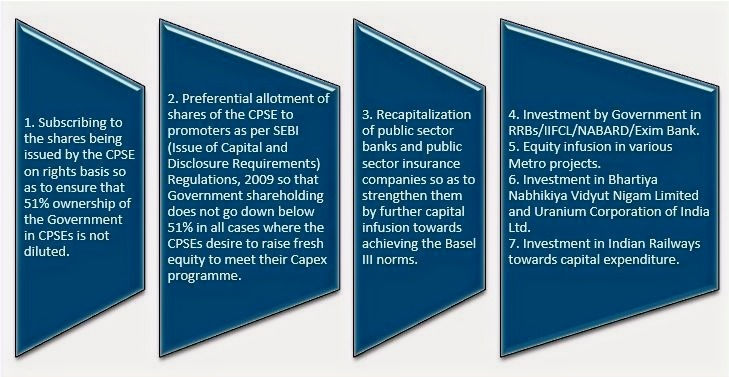
Over the period various arguments are laid down to oppose this extensive level of dis-investments. Not in every scenario’s disinvestment is an option for the government.
1. LOSS OF DIVIDEND- When the government decided to go for disinvestment for sure it gets a big cheque but what it losses is the potential capacity of the enterprise to run & yield dividend income to the government over the period of time.
2. LACK OF RETAIL INVESTMENTS- In the case of minority stake sale it is seen that when a PSUs comes with an IPO large institutional investor comes into place & grab the opportunity while the retail invests thrive for their piece of cake due low participation in the equity penetration.

3. WRONG PRACTICE- Using disinvestment as a tool to deal with fiscal-deficit might be a wrong practice for government but what people forgo is that if govt. borrows money to bridge the deficit it is required to pay interest on that but in case of divest although there is no interest, but these is loss of dividend Income to the government.
4. LOSS OF PROFIT & TAX- Government should not divest form profit making PSUss since not only profit is loss of income but also the tax thereon is a loss of potential earnings to the government.
5. OTHER ALLEGATIONS- Loss of jobs to employees, greater privatization in areas of public domain, conflicts over method of dis-investments since auctions realize more income than IPO at minimal cost, compensation of loss-making PSUs for profit making PSUs rather than disinvestment.
Every government has its own set of will when it comes to managing PSUs but the real question is that till what extent selling of public property is justified when it comes to making the bridge for deficit financing..
More to come on this Thursday…………………….TA-DA till then...................





Comments